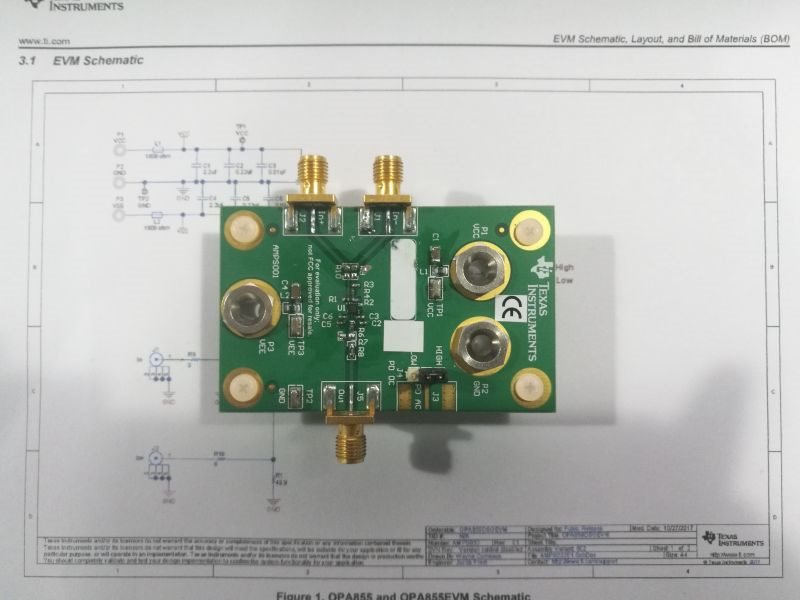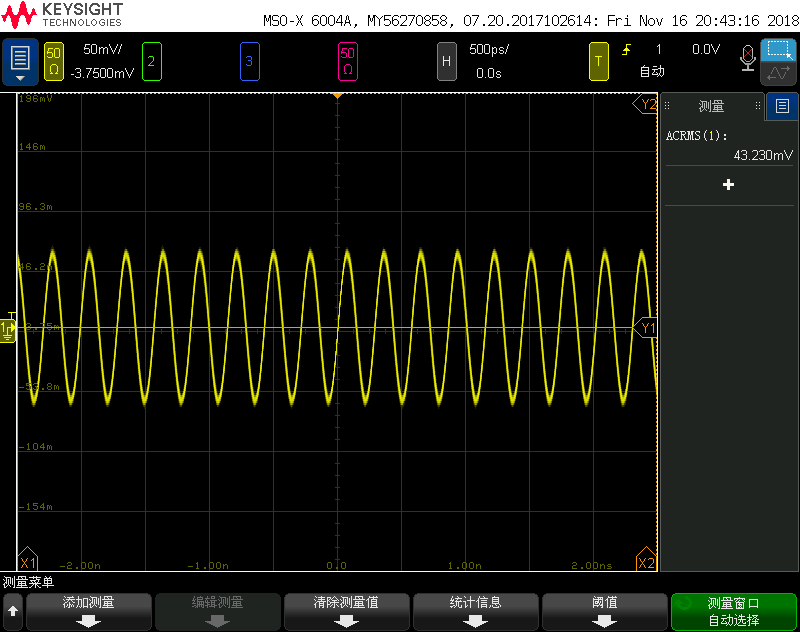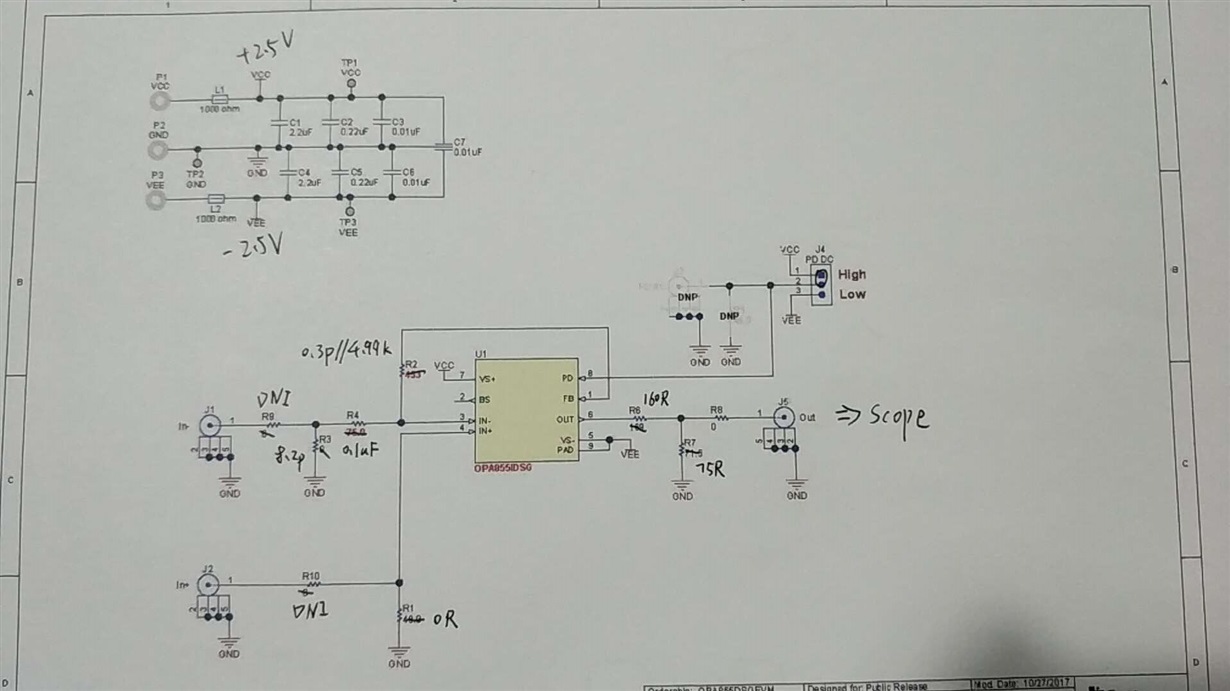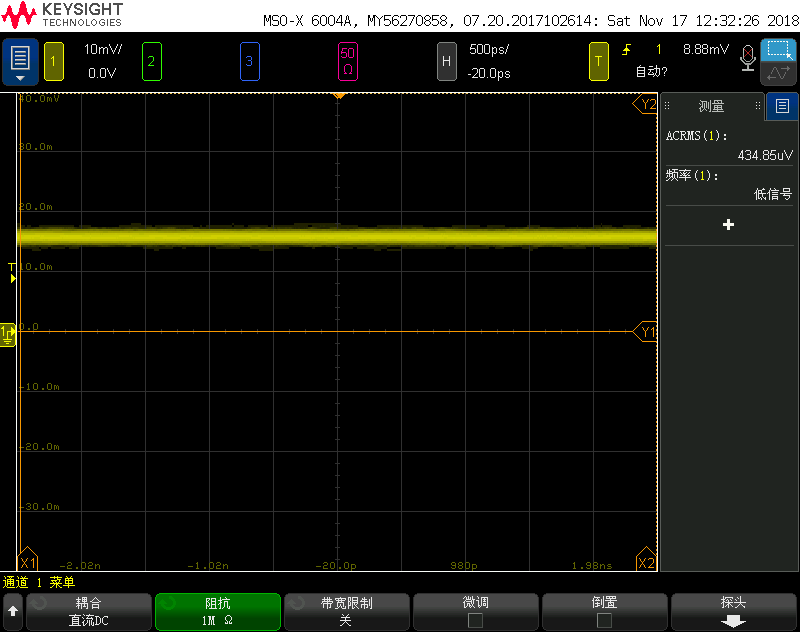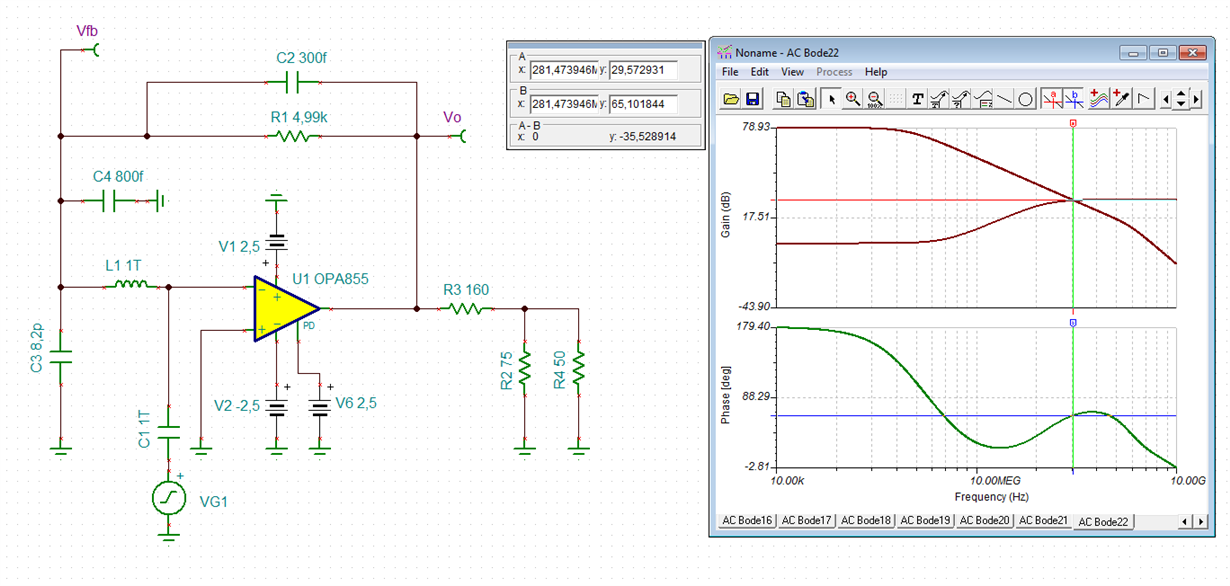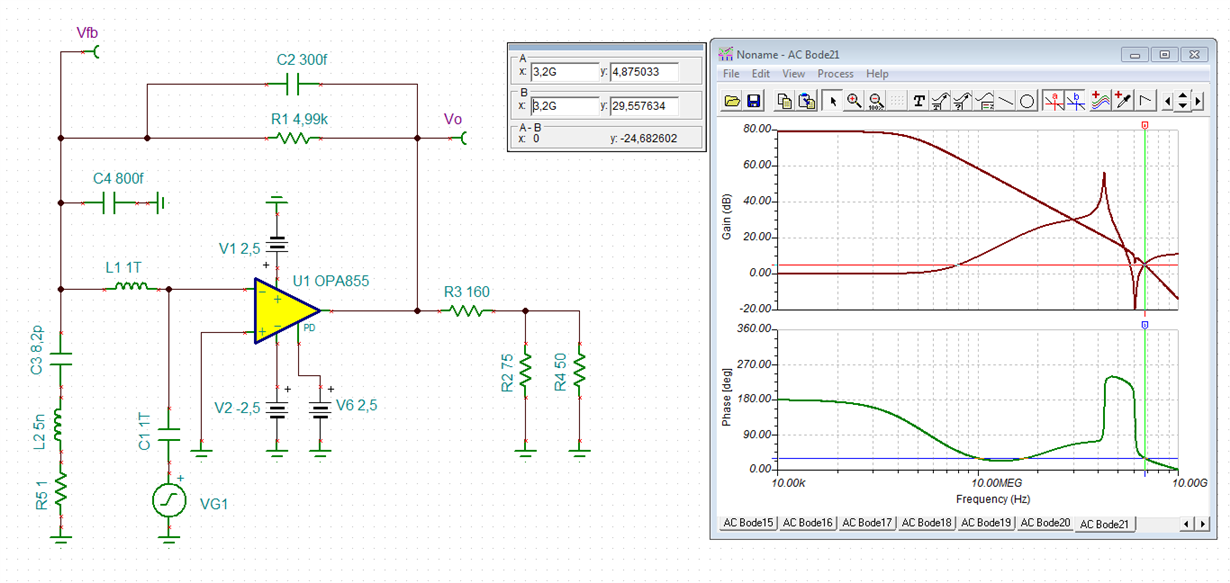Other Parts Discussed in Thread: TINA-TI,
Tool/software: TINA-TI or Spice Models
HI:
OPA855 Transimpedance Amplifier‘s Output self excited oscillation without input current.
On the TI's OPA855DSG Evaluation Module.
There is no problem in simulation.so why?
THS!


